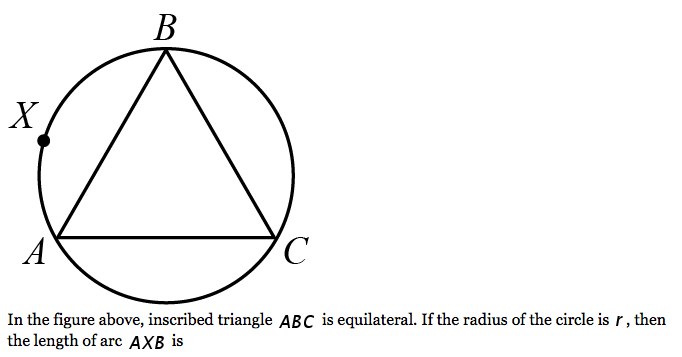Here’s today’s SAT question of the day, which is a math question about triangles and circles:

Hint: why do they tell us that ABC is equilateral? Continue reading

Here’s today’s SAT question of the day, which is a math question about triangles and circles:

Hint: why do they tell us that ABC is equilateral? Continue reading
Today’s SAT question of the day is a writing question; the format is like the “old” test, but the content is helpful for the “new” SAT, too!

Do you hear the error? Continue reading
The SAT question of the day is a math question that goes like this:

The game: substitution. Continue reading
The SAT question of the day for September 27, 2015 comes from the writing multiple choice section:

Do you hear the error? Hint: it’s about a pronoun. Continue reading
Today’s SAT question of the day is a math question about number properties (evens and odds, in this case):
![]()
How do we make an odd into an even? Continue reading
Today’s SAT question of the day: All numbers divisible by both 4 and 15 are also divisible by which of the following?
Divisibility…what does it mean? Just that a number can be divided evenly (no remainder) by another number. For instance, 10 is evenly divisible by 5, but not by 7. Got it?
Good. Let’s tackle today’s divisibility questions.
Today’s SAT question of the day is a classic writing multiple choice question. We are comparing a dog’s sense of smell…to what? Continue reading
Continue reading
Happy new year! Today’s SAT question of the day is a math question about stamps and envelopes. How many more years before no one will know what those are?? Anyhow, the question is as follows:
A machine can insert letters in envelopes at the rate of 120 per minute. Another machine can stamp the envelopes at the rate of 3 per second. How many such stamping machines are needed to keep up with 18 inserting machines of this kind?
They’ve kindly underlined the first thing that we need to look at: we have a units mismatch. One machine is in envelopes per minute, but the other is in envelopes per second. Continue reading
Today’s SAT question of the day is a math question about some basic algebra. The answer choices are those fun roman numeral options. The question:
If  , the value of
, the value of  can be which of the following?
can be which of the following?
 .
. 
 .
. 
 .
. 
We can solve this either by doing a little algebra or by thinking it through (and testing out the answer choices). I will show you both ways. Continue reading
Today’s SAT question of the day is a quick and easy writing multiple choice question about tigers. Let’s see if you can solve this identifying sentence errors question:
The tiger usually hunts by night and feeds on a variety of animals, but it prefers fairly large prey such as deer and wild pigs.
All of the verbs match…all of the conjunctions and other sentence bits seem to be in order, too. This simple sentence has no error! If you don’t hear an error when you read the sentence, check each blank systematically…and if you still don’t see an error, be confident that there’s no error!